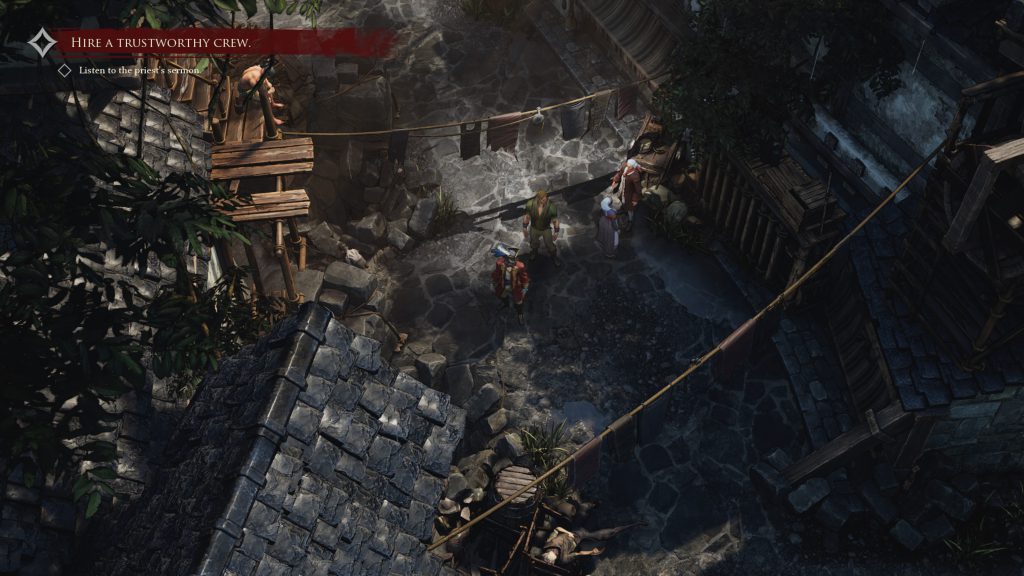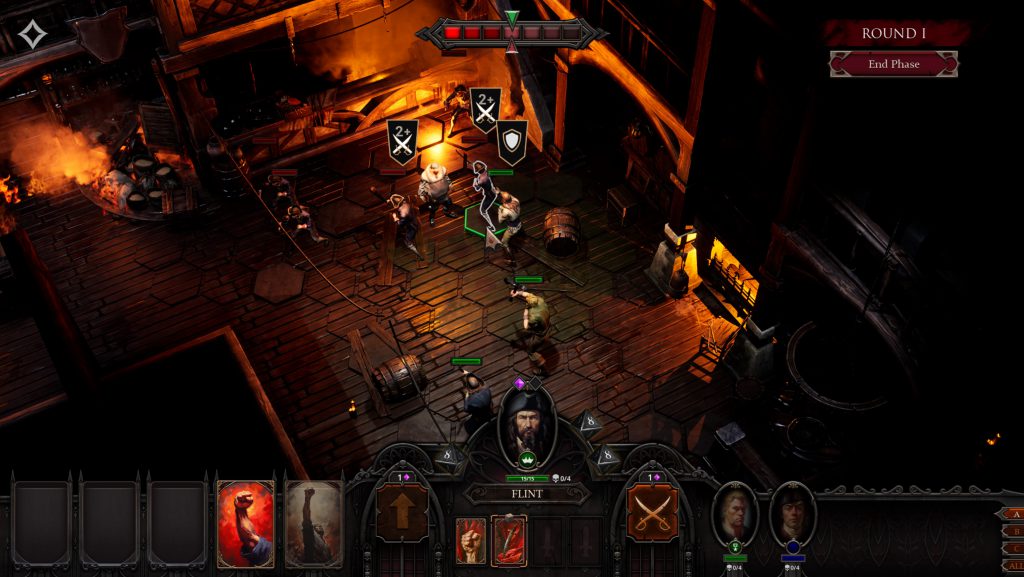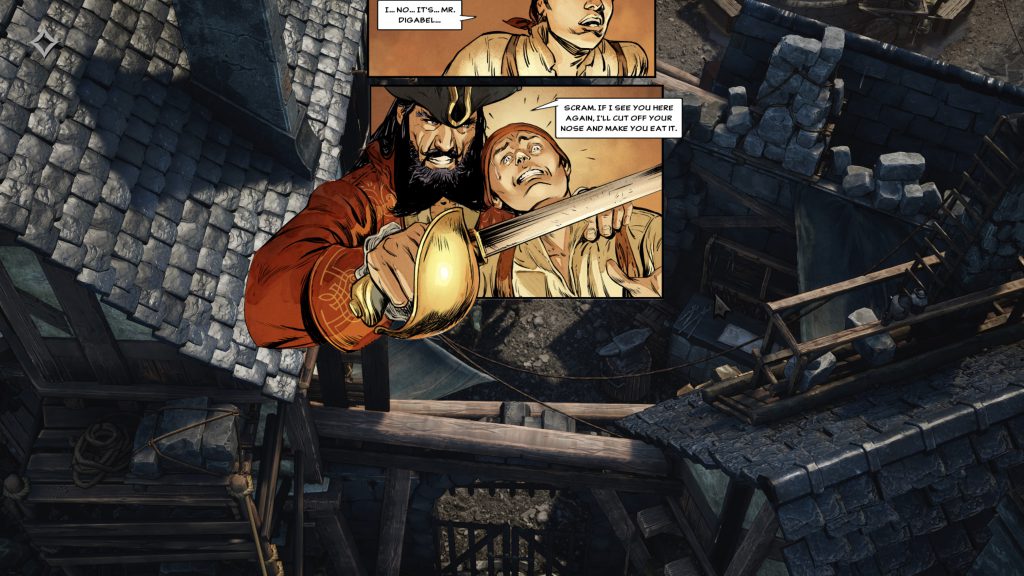Flint: Treasure of Oblivion continues the cRPG revival with tactical pirate combat
Stevenson’s Captain Flint might be best known as a diligent treasure burier and, well, rum-soaked corpse. But, Savage Level believe that he might just be the perfect main character for Flint: Treasure of Oblivion, a pulp-adventure styled RPG treasure hunt through the Caribbean.
With long-running cRPG series like Baldur’s Gate and Jagged Alliance receiving plaudits with their most recent (albeit from different developers) entries, I don’t think it’s too early to get my hopes up for a new cRPG Golden Age. While Flint: Treasure of Oblivion steers closer to tight, tactical combat, it’s an exciting game that’s launching while thirst for the genre is high. I’m happy to report that, from seeing it behind closed doors recently, it’s incredibly promising.
Flint’s three act structure takes you from the French city of Saint-Malo through to the exotic landscapes of central America as you go from an underwhelming duo of Captain Flint and his second-in-command Billy Bones to running a fully manned ship and its crew. Of course, much like in the story Flint originated from, life is fleeting and clumsiness or ill-planning can result in death. This is reflected in game with your crewmembers — who each fall into one of a variety of skill-clad archetypes — being incredibly susceptible to death if you don’t plan out your combat properly.
That’s because realism is a focus here. Sure, that’s a sentence that sounds a little silly considering the imagery that terms like Age of Piracy summon up in the mind of most people, but Savage Levels’ Production Director (Saïda Mirzoeva) and Game Director (Johan Spielmann) were quick to clarify that that’s something they’re hoping to dispel. What that means isn’t immediately clear, however Saint-Malo’s careful scale and design and its citizen’s grime and grit gave off a dangerous, downtrodden atmosphere rather than setting up the city as a playground for chaos. There were no zombies roaming the streets, but the town guard and its garrison were a visible presence and threat to the disorder that tends to follow pirates.

Realism also spills into the combat, as I saw while watching one battle play out within the confines of Saint-Malo. It was a tight, tactical battle which revolved around a ground-level floor surrounded by elevated platforms and walkways. Characters actively tripped each other over allowing for quick executions, while pirates on the walkway tipped barrels down onto guards that had waited by the fringes.
Combat was quick and eventful, a surprise considering that it was turn-based. Placement, flanking and environmental elements played a major role. I mentioned earlier that members of your party have different abilities, that stands here, however in addition to that there are weapons and cards that you collect while in the exploration mode that can be used during combat — massively deepening your choice of options in combat. These cards were heavily leaned on during the fight, and almost as important as the environmental and teamwork elements, quickly flipping tables on the attacking group.
Combat, as well as parts of the exploration phase, were punctuated with on-screen dice rolls to gauge success. I, personally, will never tire of seeing dice roll on screen with their various modifiers playing out alongside them. It’s incredibly satisfying and also underlines exactly what’s at play at a moment that would otherwise be micro-second decisions played out by the game’s code.

Slowing things down, making things feel more weighted and grounded is easily one of the best ways to immerse players in the world. Flint: Treasure of Oblivion has another trick up its sleeve for that, and that’s how it uses Franco-Belgian comic inspired pop-ups and frames to add more character and emotion to its storytelling. These serve as a kind-of third layer of the game, beyond exploration and combat, and take over the screen when something important is happening.
In one instance the main character happened upon a guard who had fallen to their death outside the city gates. These heavy-lined drawings that appear sequentially, advancing as you click, take control of the pace of the situation and do a great job of refocusing your attention on what matters.

I can’t recall a game using a punchy comic-book style to enhance what’s going on screen, at least not to this level, since XIII’s original release decades ago. It’s so well done in Flint: Treasure of Oblivion that I’m certain we’re going to see it coming back with a vengeance once Flint becomes available to download.
Flint: Treasure of Oblivion will be available on PC, PlayStation 5 and Xbox Series X|S in Q4 2024.
Comments are closed.